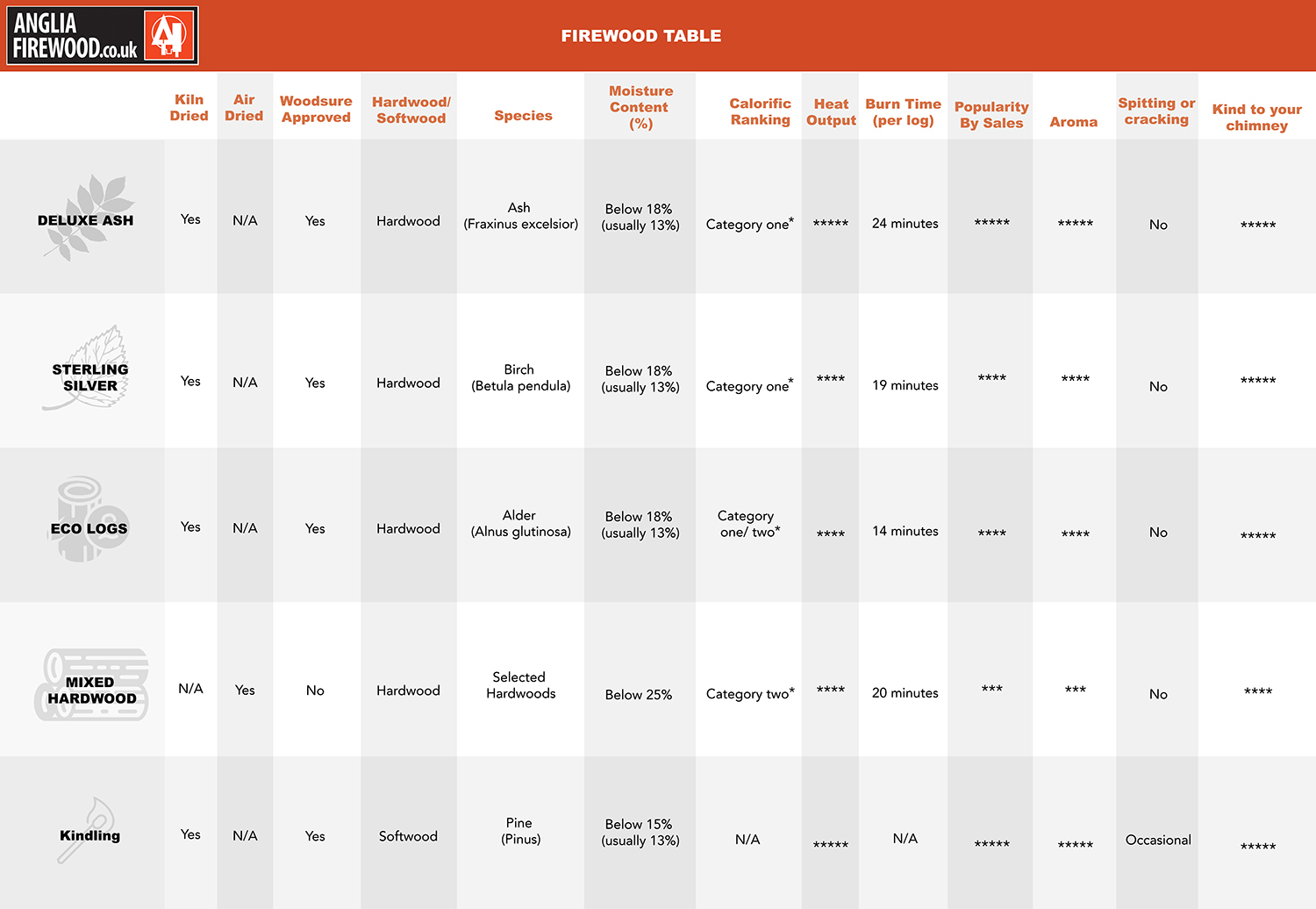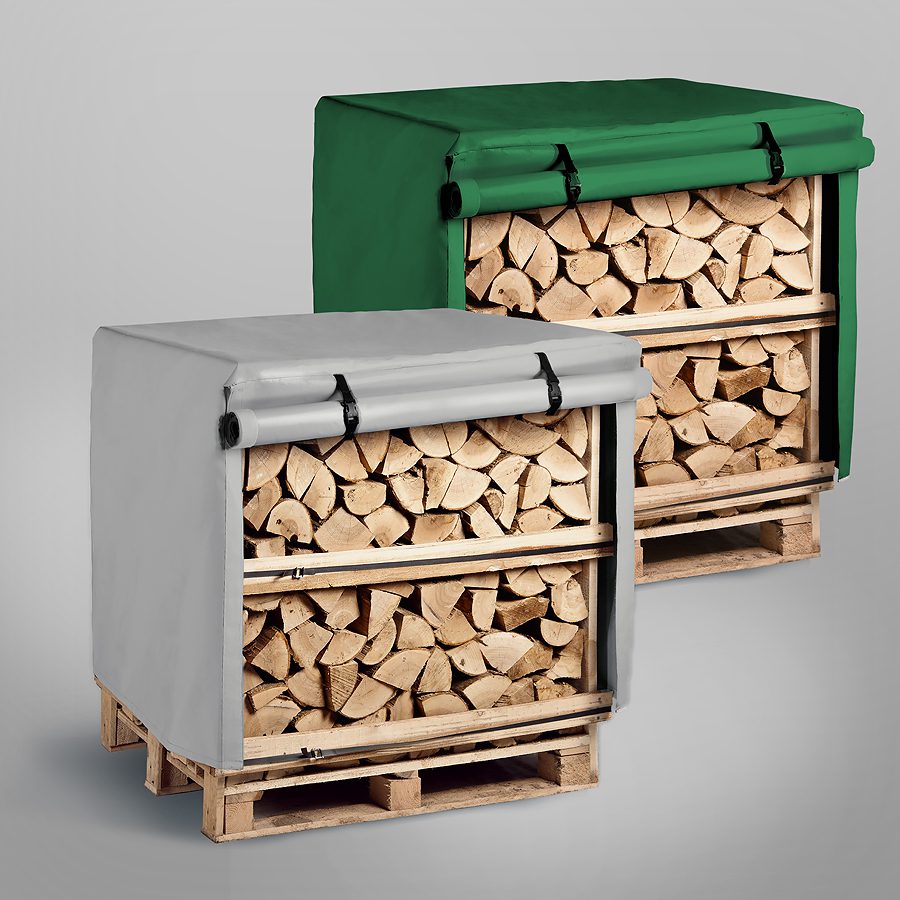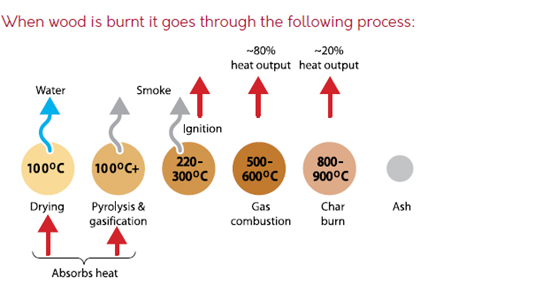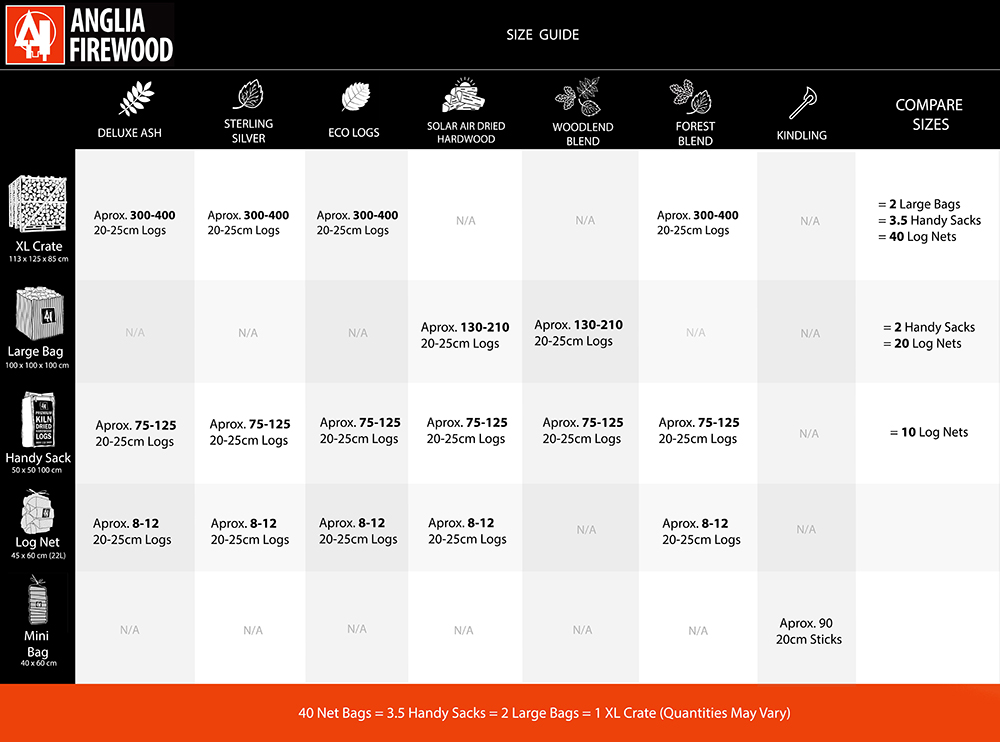
Order Online or
Phone: 0800 112 3469
Free Next Day Delivery
Order before 12pm
Firewood for Dummies

How to Store Firewood
It is very important that once you have bought and had your firewood delivered that you are storing the logs in the best way.
It is vital that the logs are under cover, a log store or our jackets are ideal.
The logs need to be stored in a place where they are off the ground in a dry area where they can get good air flow. Good air flow is crucial as it moves the air preventing any moisture in the air to be absorb by the logs.

It’s a minefield……Top tips
- Check the moisture content: for kiln dried firewood below 18% and for air dried below 25%
- Buy kiln dried hardwood or good quality air dried hardwood: a higher category species log with less moisture is far more potent and has more energy than a lower category species log or a log with high moisture, so judging these against each other is a costly mistake.
- Do not buy by weight: fresh from the tree firewood can weigh up to five times more than kiln dried firewood, so you could be buying lots of moisture.
- Beware of packaging tricks: e.g. a 1000 litre crate (1 cubic metre) could be filled with tight hand packed logs which are painstakingly hand packed and jammed tight. Alternatively, the same crate could have firewood thrown or tipped in until full, giving you up to 40% less product.
- Check the delivery method. If your firewood is being delivered by a national courier, it is more likely to be a stressful experience than a pleasant one. Our deliveries are carried out by our own drivers in our own vehicles with specialist equipment to get your product where you need it…not on the kerb. Our intention is to make your firewood delivery a smooth fuss free experience.
- Store your firewood correctly. You should store your firewood in a dry store to prevent moisture increasing in your product, which can cause problems when burning.
- Have your chimney swept. You should have your chimney swept at least once per year to ensure clear air flow and optimum performance of your burner
Weight … don’t be fooled.
- A heavy load. It is a very common mistake to think that a heavy load of firewood will give you good value for money.
- A freshly felled tree can consist of up to 90% moisture, so firewood which is not properly dried is heavy in comparison to properly dried wood. e.g. A 1000kg (1 ton) load of fresh cut firewood could be delivered as one truck load, in comparison a kiln dried load of firewood delivered in the same truck could weigh as little as 200kg but take up the same space. In addition to this, heavy, wet wood uses valuable energy in the first stages of burning simply to dry the moisture away, which drastically reduces the calorific value. To summarise, poor quality firewood could weigh three to five times as much and take up twice the amount of space as luxury kiln dried ash and still the ash will last longer, burn hotter and cleaner and certainly offer better economy.
Species
- Choosing the best wood species for your wood burner, open fire, chimenea or fire pit is important for temperature, burn time, aroma, economy and the environment.
- Hardwoods have less resin and burn slower and longer. Hardwoods are generally trees which lose their leaves in autumn and sleep through the winter (deciduous).
- Softwoods burn quickly. Softwoods are generally trees which keep their leaves or needles all year round (coniferous).
- You may be surprised to know that each wood species has a calorific ranking which is determined by resin content, density of fibre structure and moisture content; you may associate calories with food, but this is a measure of energy and can be measured in the following units which you may recognise: 1 Btu (British thermal unit) = 1,055.06 Joules = 252 kcal (kilocalorie) = 252 calories.
- Category one species for firewood species which are long burning with a high temperature and high calorific value are: ash, oak, maple, birch, hornbeam, beech, fruit wood.
- Category two species for firewood species which have a slightly lower calorific value are: alder, sweet chestnut, horse chestnut, lime, willow, elder (kiln drying promotes all of these species to category one).
- Category three species for firewood species which have the lowest calorific value are: most softwoods i.e. pine, spruce, larch, cypress, any category one or two species which have moisture content of above 30%
Drying firewood.
- Kiln drying eliminates the need for natural air drying and reduces the moisture content far lower than is possible by air drying and can promote category two species to category one.
- Seasoning of firewood usually refers to natural air drying.
- The drying time influences on the fuel efficiency because less drying time = more moisture.
- Natural air dried wood should be dried for at least six months before use.
The science of wood burning.
- First the wood heats up to approximately 212 oF (100oC) evaporating the moisture in the firewood. There is minimal heating from the wood at this point. Kiln dried firewood eliminates most of this valuable energy loss which is initially used to dry the firewood.
- Firewood solids start to break down, converting the fuel to hot gases (near 575 oF, 300 oC)
- From 575 oF to 1100 oF(300 – 600 oC ) the main energy in the wood is released when fuel vapours containing 40% to 60% of the energy burn.
- After the burning of fuel vapours and the moisture has evaporated, only charcoal remains burning at temperatures higher than 1100oF (600 oC) It is at this stage that you will see the full benefit of the deluxe ash product.

© 2025 Log Fire | Terms & Conditions






